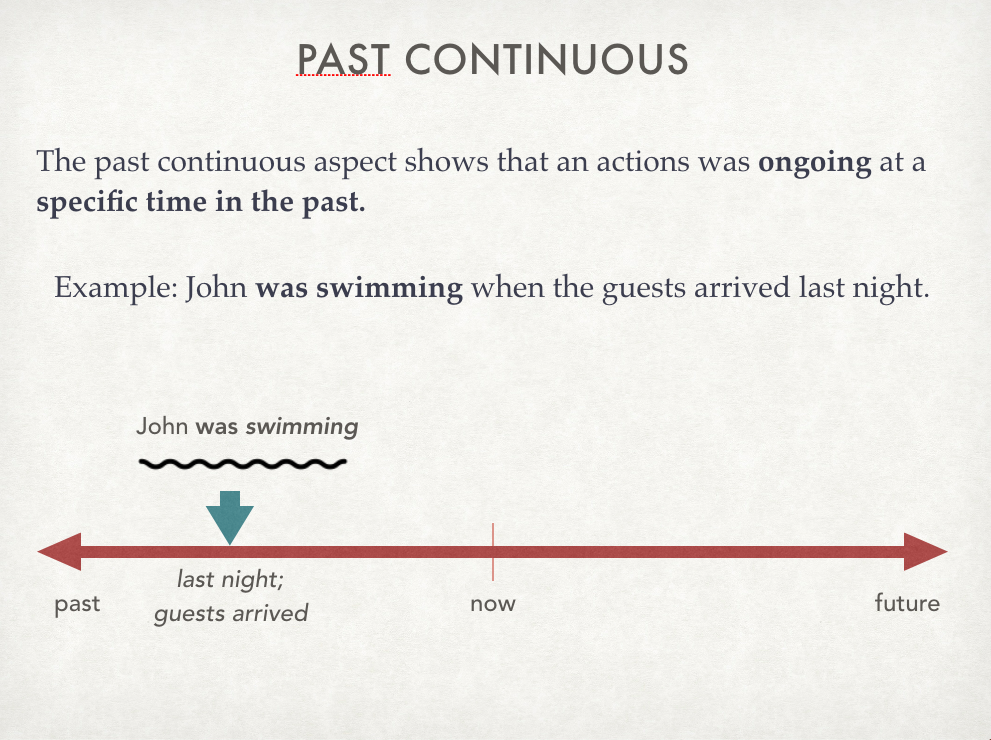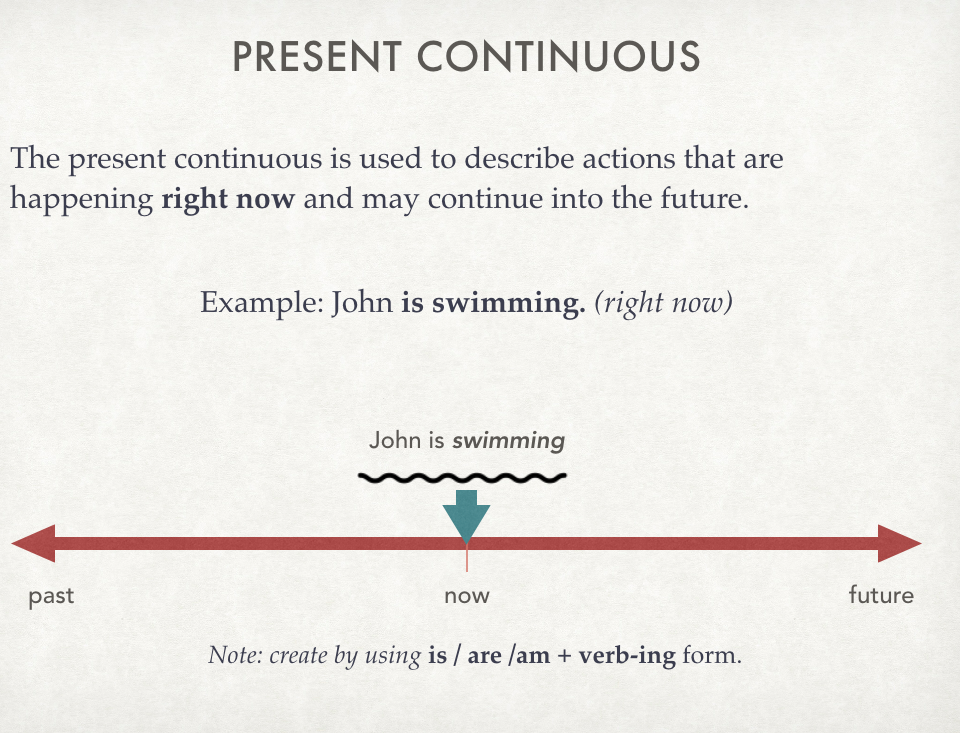Exams such as the GMAT, SAT and CAT can be quite tricky in the way they test English Grammar Rules in their Verbal Ability Sections. The fact is that some English grammar rules can be un-intuitive and misused frequently by even proficient users of the language. Tests such as the GMAT and SAT quite cleverly test students on these tricky and confusing concepts.
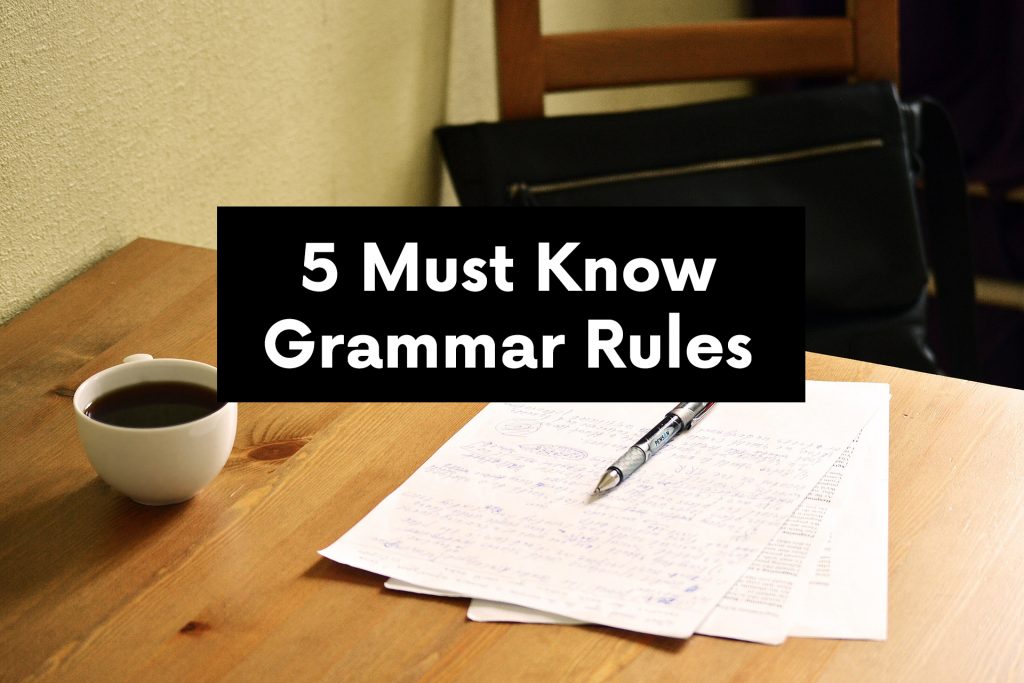

Let’s look at 5 tricky English Grammar rules that are a Must-know for test-takers.
#1 Indefinite Pronouns that are Singular
If you thought that the pronoun ‘everybody‘ is plural, you’d be wrong. The fact is that the indefinite pronouns that end with ‘body’, ‘one’, ‘thing’ and ‘where’ are singular.
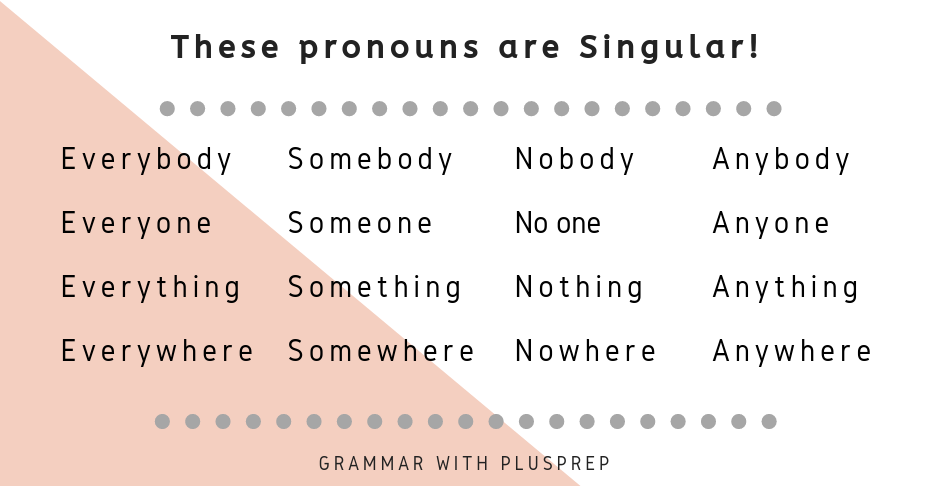

For Example: Everyone must take care of her (or his) belongings.
Even though “their” may be used here in ever-day contexts, ‘his’ or ‘her’ is the grammatically correct pronouns to use to refer to such indefinite pronouns.
Another Example: Everybody is sad about the results.
Here, the singular verb ‘is’ corresponds to the singular indefinite pronouns ‘everybody’.
#2 Using Apostrophes with Pronouns
A common question that many have is, “What’s the difference between its and it’s?”
The root of the confusion comes from how the English language treats ‘possession’ between nouns and pronouns.
For example: Ram’s car needs an oil change.
The apostrophe + s indicates the fact that the car is a possession of or belongs to Ram.
Another example of Possessive Noun: The car’s oil needs to be changed.
Now let’s look at the same concept applied to pronouns (he, she, it, they, them etc..)
Example: His car needs an oil change.
Similarly: Its oil needs to be changed.
Noticed how the pronouns did not have an apostrophe + s to show possessive?
On the other Hand: consider these sentences…
– He’s (he + is) a good person.
– It’s (it + is)on the way.
– They’re (they + are) happy to see you.
The use of ‘s / ‘re / ’m with pronouns denotes ‘contraction’. This essentially means that the verb (are, am, is, are) following the pronoun gets shortened and added to the noun.


The crux being: Pronoun possession is denoted without an apostrophe. Whereas, the apostrophe is used in pronouns to show its contraction with a verb.
#3 “-ing” verbs and their usage
The verb + -ing form is called the present participle and this is used to create continuous / progressive aspect of tenses.
The thing that is most important to know about this verb form is that it can only be used to describe actions that happen right now or at a specific time in the past or future.
Quick glimpse into correct use of the continuous aspect in present, past and future tenses.
To describe actions that happen on a regular, things that are trends or habits or universal truths – use the simple present.
Examples:
- I sing.
- The Earth revolves around the Sun.
- The new law bans the sale of tobacco to minors.
Learn more about tenses and their appropriate use through this slide deck.
#4 Using correct adjectives for Countable vs Uncountable nouns
The rule is that adjectives of quantity must be used with the appropriate noun type. (Grammatically) countable nouns must use countable adjectives and uncountable nouns must use uncountable adjectives.


Countable and Uncountable Adjectives
The problem isn’t knowing the difference between uncountable and countable adjectives. It’s rather spotting nouns that are considered grammatically countable vs nouns that are considered grammatically uncountable. This seems quite un-intuitive to many – as illustrated with the mini-quiz below.
Countable and Uncountable Nouns
What was your score? It’s very likely that the results surprised you.
Remember; we are looking for Grammatical ‘countability’. The easiest way to find out if a noun is grammatically countable is to literally put a number (let’s say number 7) right in front of the noun and see if a logical plural form can be made.
Example:
– 7 cars? Yep, makes sense
– 7 traffic? Nope
– 7 tea? Nope
– 7 stars? Yep, makes sense.
– 7 electricity? Nope
The “Nopes” are uncountable and “Yeps” are countable! As simple as that.
Example sentences:
– I have fewer cars now than I did ten years back.
– I have less money in my bank than I did yesterday.
– The amount of money in my accounts is less / low.
– This costs fewer Rupees now than it did yesterday.
– There was much less traffic in Bangalore a couple of years back.
– Less tea… Many cups of coffee.
#5 Use the appropriate ‘Pronoun Case’
We’ve seen that pronouns can have a variety of forms: possessive, contracted, singular and plural. Pronouns also take on different forms based on their ‘case’.
In other words, pronouns take on a 'subjective case' when replacing nouns that are subjects and take on the 'objective case' when replacing nouns that are objects.
What are subjects and objects?
When a noun (or a noun-like word) does the action it is called a subject.
The object is the noun (or noun-like word) that doesn’t do an action.
Eg. Ronin (subject) threw the ball (object) at Chris (object).
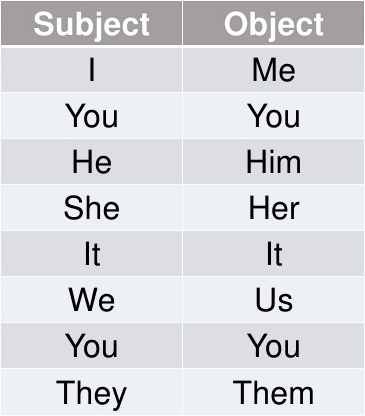

Subject and Object Pronouns
You must have realized that in ever day usage you use ‘him’ in some contexts while ‘he’ in others. The reason for this may not have been evident to you, since you possibly ‘intuitively’ knew which to use. For sentences such as “He asked her out”, the decision of which to use where is quite straight forward, but it gets problematic when sentences have subjects and objects that are compounded.
Let’s look at some sample sentences.
Can you identify the right pronoun case?
1. John and (I /me ) went for a movie.
2. John came home to meet Ruth and (I/ me).
3. Daniel works with (him and her / he and she).
If the answer for the second sentence was “I”, you are wrong. The easiest way to avoid confusion is to just remove the compounding and look at the pronouns individually.
1. … I / me went for a movie.
2. John came home to meet I / me.
3. Daniel works with him / he.
3. Daniel work with her / she.
The appropriate pronouns to pick were quite obvious when we remove the compounding. It’s that simple.
When confused about pronoun case for compounded words, remove compounding to decide on the correct case.
Learn to identify these 5 sneaky grammar rules and you will be on your way to acing the verbal ability sections of your tests. We also recommend that you read our article on How to build vocabulary effectively, if vocabulary has been a pain point in your prep journey.
Want to know more about these stylistic conventions of writing? Check out The elements of style by William Strunk.

